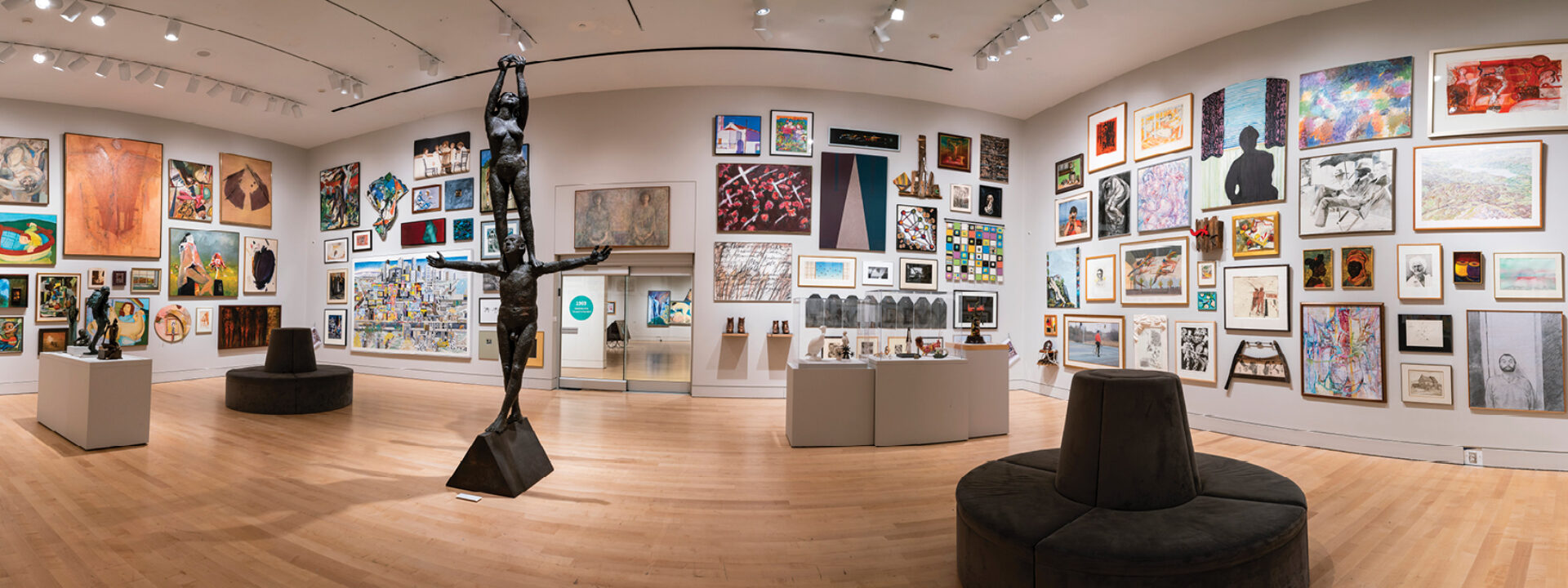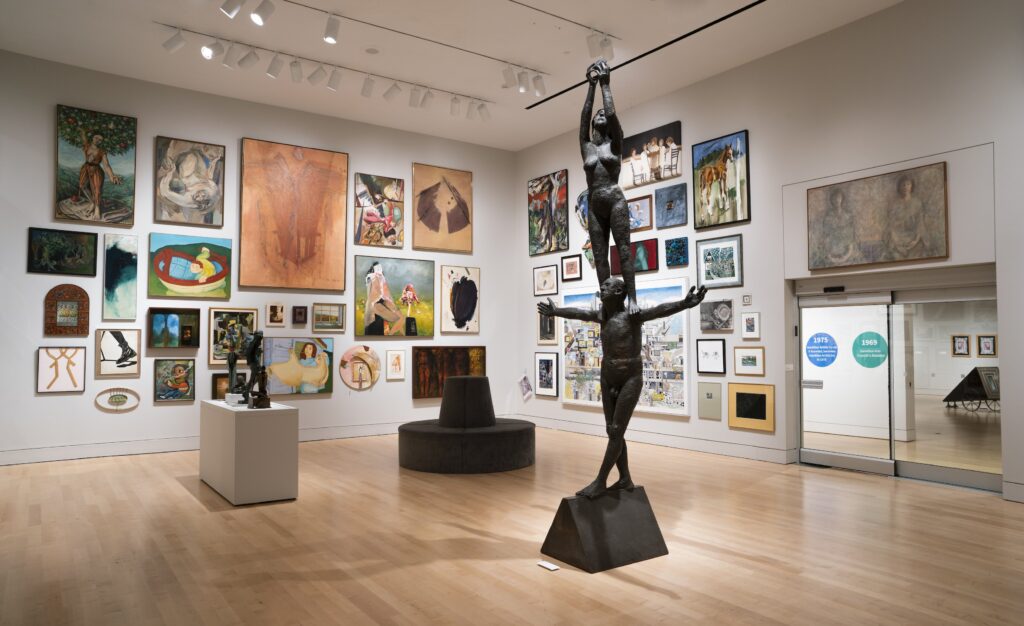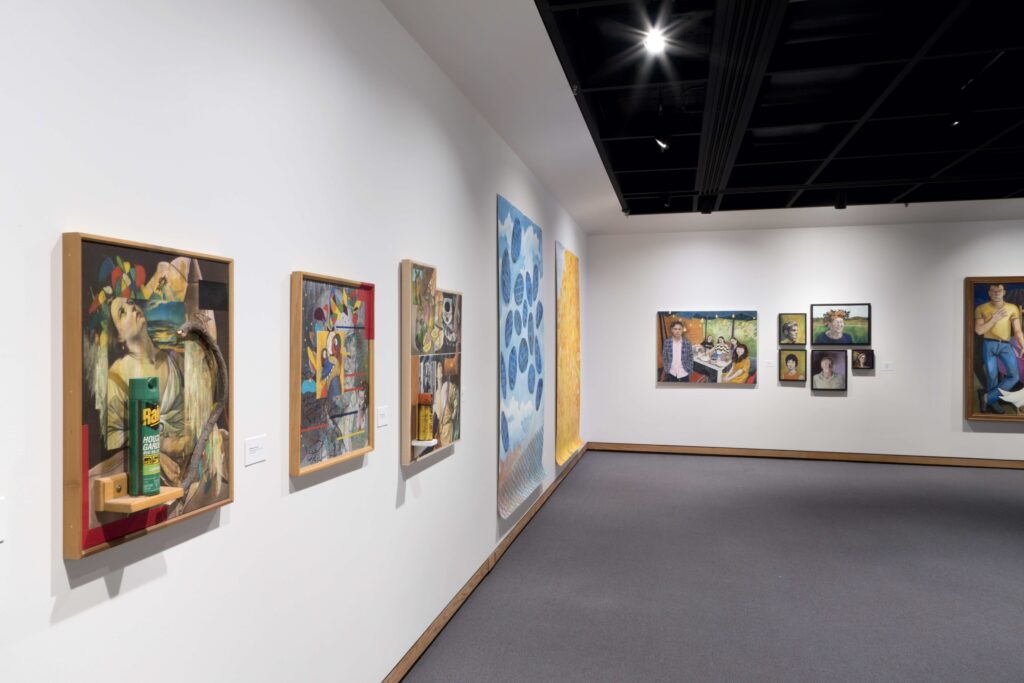History teaches the stubbornness of the Hamilton artist

This year has brought three exhibitions about the city’s artistic past at the Art Gallery of Hamilton, McMaster Museum of Art and Hamilton Artists’ Inc.
There is a special place on my bookshelf for Climbing the Cold White Peaks, a book produced by Hamilton Artists Inc. in the mid-1980s that chronicles Hamilton’s art history from 1910-1950.
I bought my copy, signed by author Stuart MacCuaig, a dozen years ago at Under the Moon, a bookstore that was once a personal favourite of mine on James Street North. A coffee shop has long erased the bookstore’s memory but MacCuaig lingers as an inspiration for the work that has followed to preserve Hamilton’s cultural memory.
Climbing the Cold White Peaks documents a city that once, as a matter of pride, exported all its artists to larger cities before forging its own artistic identity around labour activism and a fledgling feminism. This history taught my younger self about the stubbornness and collaboration it takes to remain an artist in Hamilton, where civic support for the arts has been uneven at best.
While Hamilton’s greatest artistic strides came in the decades after those captured in MacCuaig’s book, 30 years would pass before conversations among members of the Hamilton Arts Council (in which I was heavily involved as executive director) would lead to Building Cultural Legacies, an online database that catches us up to the year 2000 through archival materials, articles, and artist interviews. A modest exhibition at the Art Gallery of Hamilton accompanied the platform’s launch in 2019, but this past year has seen an outburst of three further exhibitions honouring our local art history.
“The Bigger Picture: Art in Hamilton 1950-2000” expanded upon the mission of Building Cultural Legacies with a large-scale exhibition at the Art Gallery of Hamilton shaped in part by Bryce Kanbara, who had also been instrumental in organizing Climbing the Cold White Peaks. His determination to organize an open call from the local community resulted in a staggering salon of artworks spanning a half-century of local artists. Wildly eclectic, this gallery hang gave physical form to an era of open-minded experimentation that flourished in less formal social spaces than this.

At the McMaster Museum of Art, “The Contemporaries: This Must Be The Place” recognized eight artists who graduated from McMaster University’s studio art program in the late 1980s and exhibited prolifically as a collective in the years that followed. The raw physicality of materials and figuration that united their practices has its echoes in the AGH’s salon, while an array of archival materials in the MMA’s exhibition traced the cultural impact of the contemporaries through media coverage of exhibitions in self-made spaces that also hosted punk bands and bar nights.
Co-curated by Kanbara and Brian Johnston, “Group of Seven R.I.P. (Remembering Inc. Pioneers)” at Hamilton Artists Inc. was planned for the Inc.’s 45th anniversary in 2020 before being delayed by the pandemic. Presented this summer, the exhibition elevated a scrappy assembly of stories and scrawled-upon photographs over finished works of art to honour seven personalities who were active in the Inc.’s early days.
Bob Mason and George Wallace are readily recognizable as artists whose public gestures endure in memory – consider Mason’s flotilla of caribou in Cootes Paradise in the 1990s, or Wallace’s iconic, near-androgynous bronze figures found in many public spaces in our region. Others are notable for the organizational skill and eccentricities with which they shaped our landscape.
Among these is Jackie Kay, a “civil servant and a renowned tap/jazz dancer,” and artist-philosopher David Avon, whose absurdist program for Cable 14 played from a cathode ray-tube television in the gallery. MacCuaig hovers at the margins of these stories as a friend to writer and poet Gleave Harris at the time of his too-soon death. Gordon White also lived a short yet radiantly ambitious life in his tenure as Inc. administrator before succumbing to AIDS in 1988. A statement contributed by Carol Podedworny, now director of the MMA, pays tribute to his enduring influence as a mentor during her first-ever gallery job at the Inc.
Jewel Foster, another Inc. administrator who established experimental film programs during a time of police suspicion and attempted censorship, was lovingly remembered through a textile collage created by her daughter, artist Thea Haines. A note by Inc. peer Sam Robinson pinned askew to the wall, almost as an afterthought, recalled Jewel and other Inc. members who regularly brought their children into the gallery – a habit that cultivated a future generation of artists who, like Haines, remain active in this city and beyond.

Photo: Bob McNair.
Preserving these stories from one generation to the next – through mentorship, parenthood and gossip alike – is the continuity that any art community needs to endure the gentrifying forces that many saw coming. New buildings and businesses have sprung up on James Street North where empty lots and vacant storefronts once gave rise to an art scene that can feel like a reckless dream in hindsight. I remember viewing luscious oil paintings in a storefront where the floor was caved in to reveal the basement below, a skeletal horse sculpture suspended in a disused kitchen, an apartment gallery strung with yarn, taut like lasers.
“The phrase ‘art for art’s sake’ is not logically admissible for nothing is for its own sake,” David Avon wrote in a reflection among many pinned to the Inc.’s wall. “Everything is in relation to another thing.” In times of rapid change, this work of reclaiming our relations from the past takes on a new necessity – as defiance in the face of erasure, as lessons in adaptation and renewal.











